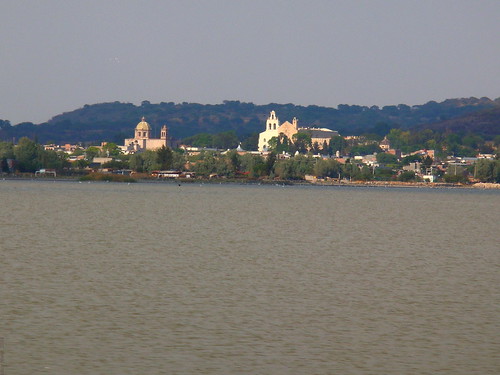
Acambaro is one of the municipalities in the state of Guanajuato in Mexico, this city was founded by Franciscan missionaries in 1526, a community dedicated to agriculture and trade, is known for producing different varieties of breads such as the famous acambarinas, bread egg milk and bread.
Acambaro has an excellent climate thanks to its geographical location, is surrounded by the Sierra de los Aagustinos, also known as Cerro Prieto Cerro de las Cuevas de Moreno, Cerro del Toro and the Cerro de las Siete Cruces. Acambaro City extends over a beautiful valley and lands are washed by the Lerma River, whose waters are used to irrigate farm fields.
The spring season is characterized by a summer dry season and abundant rainfall occurs in winter frost usually occurs with some regular intensity.
Acambaro is a city with a long history since pre-Hispanic times, is considered the center of culture Chupícuaro, who settled on the banks of the Rio Lerma, many farmers are the remains found in the area who so testify Acambaro, whose inhabitants were and extraordinary potters, the decoration of their vessels had a finer finish.
Today Acambaro is a farming area, thanks to its excellent geographical location, is surrounded by a large network of irrigation canals, dams and lakes has many to be the principal of Cuitzeo Lake.

The main attractions of Acambaro are the Stone Bridge, built work in the year 1751 consists of nine arches over the Rio Lerma, your posts are adorned by four magnificent religious sculptures that show images of the Virgin Mary with Child and St. Joseph in the north and the south you can see the images of San Francisco and the Virgin of Guadalupe.
The aqueduct, a work built in 1527 and was intended to bring drinking water from the vicinity of the Sierra de Tocuaro unfortunately not well preserved.
Taurine Fountain, located next to Temple Hospital, was built to commemorate the first bullfight in New Spain in the sixteenth century, this source has great historical value because it is unique in the world and Mexico.
Temple and Convent of St. Francis of Asis, built during the seventeenth and eighteenth centuries, its architecture can be seen in the Baroque style, has a beautiful courtyard in the center of a beautiful religious image highlights.
You can still see three of fourteen chapels that existed in the eighteenth century, built to pray the Stations of the Cross during Holy Week.
El Santuario de Guadalupe, built in the eighteenth century, within which are preserved Santanamayense four murals by the painter Don Pedro Cruz Castillo, a recognized reputation in the conduct of religious subjects.
El Templo del Reloj, in the atrium area of the Temples in San Francisco are worth seeing. The Templo del Reloj, built in the sixteenth century is cast in stone semicircular concave inclined.
The Temple Expiatory work built in 1850 one where the people come to ask forgiveness for their sins.
The Temple of San Antonio built in the eighteenth century is seen in its architecture Tuscan style.
The great Franciscan Convent of Santa Maria de Gracia, in which central courtyard, this beautifully carved with baroque decoration. The arches of the set consists of arches, which are adorned with beautiful human figures representing characters from the Catholic church, and found one can see the Franciscan monks walking through the corridors of the cloister, as this whole convent is still a load of that religious order.
The attractions of Acambaro has many more, too numerous to list, it is best to give your back for this beautiful valley to enjoy the beauty. If you travel to Acambaro say that the city is 291 kilometers from Mexico City is a city that has all the amenities needed to make your stay pleasant for tourists that visit, he makes the journey from the city of Mexico through Ixtlahuaca and San Felipe del Progreso, going for gold, Tlapujahua, Maravatío de Ocampo, until you reach the beautiful city of Acambaro.

Bon Voyage!
Leave a Reply
You must be logged in to post a comment.
Recent Comments